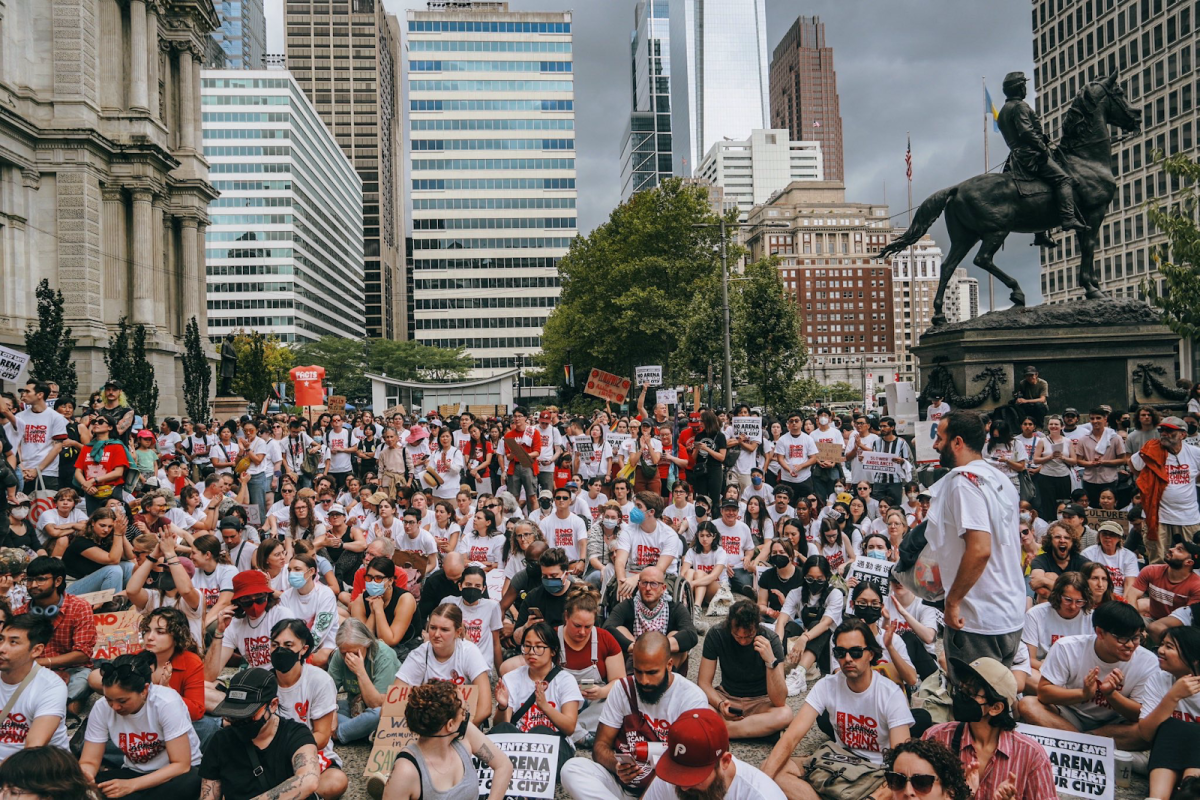Since the late 1800’s, Chinese and other Asian American immigrants faced backlash- racism and prejudice for their roots. The result? An ethnic enclave where the thousands of Asian immigrants have joined together since then to create a sense of community. Over the years, Chinatown has gone from a small block of Chinese immigrants to a large, bustling, and close-knit community of Pan-Asian culture spanning over 20 blocks.
While Chinatown continues to showcase its diverse culture through cuisine, architecture, and community events, locals are growing concerns. A proposed arena for the 76ers was introduced in 2022, and as each day passes, the people of Chinatown continue to grow worried.
The 76 Place Arena was proposed as the future home of Philly’s NBA team, where it would sit in Center City. While developers argue that the arena will increase economic growth and bring job opportunities, the residents of Chinatown argue that the arena will gentrify their neighborhood and cause issues in infrastructure amongst other problems, which will displace residents.
Charlize Ko, the social media lead at No Arena in Chinatown Solidarity (NACS), is one of those voicing concerns.
“Traffic and gridlock is going to increase exponentially with the arena. Six years of construction is a very long time and that basically guarantees that a whole area is going to be blocking off this major place that’s right next to Chinatown.”
The blocked roads and gridlock from the arena could cause severe issues for emergency vehicles, possibly blocking ambulances and other vehicles from reaching critical destinations. Public transportation would also be affected by construction, with PHL Watchdog reporting that construction would require SEPTA to shut off power to Jefferson Station and 11th Street on a regular basis. According to Ko, these issues are only a piece of the puzzle. She emphasizes that the arena will harm local businesses, many of which gain business through foot traffic.
“It’s not going to be good for the general half of the community,” she said. “It’s really, really horrible to a lot of these immigrant businesses.” With the projected blockages to these businesses as a result of the arena, local citizens worry that businesses will lose customers and struggle to remain open.
Despite these challenges, citizen-led movements have shown resilience. Activists have mobilized support against the arena through phone banking, rallies, such as the one depicted in the photo above, and parades, with the most recent one occurring on November 9th. Volunteers have reached out to city council members to gain support, and were met with agreement.
“Volunteers are amazing,” Ko said; people have joined “in droves” to mobilize support.
Like the residents of Chinatown, many of those that visit find comfort and belonging in Chinatown, especially Asian Americans. Ko for example, who grew up in Virginia without a large Asian population, sees Chinatown’s community as a safe space to find solace among Asian culture.
“Chinatown… provided me hope even in the suburbs,” she said. “Just 30 minutes away from your house, there is this community full of amazing people just like you who you know are representing your culture… I knew Chinatown was that hope and that safe space for young kids, young Chinese kids, young Asian kids just like me and knowing that… as a child growing up, I didn’t have that space.”
As Chinatown continues to grow and prosper each day, the fight against the arena does not end. Advocates like Ko are determined to preserve the history of Chinatown not only for the present, but for the future and the generations of Asian Americans that will call the place home.



